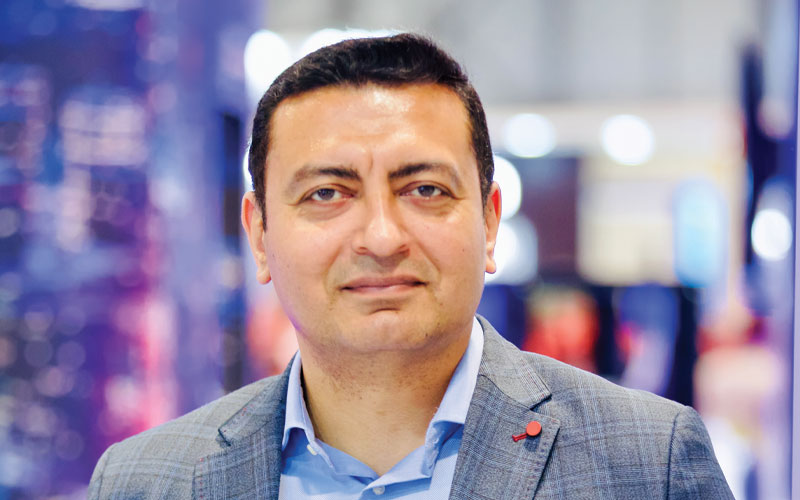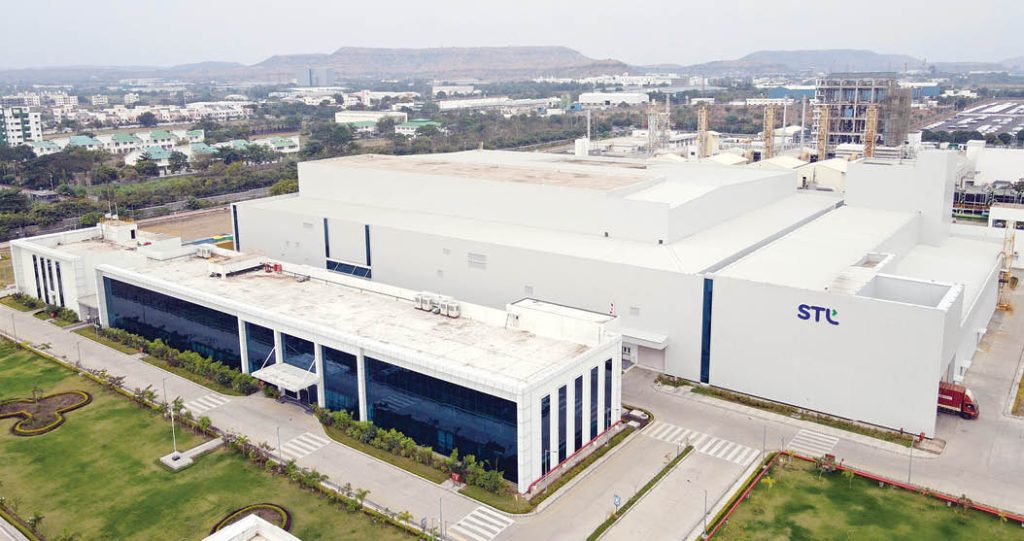As the government launches various schemes and initiatives to provide fibre-based broadband access to unconnected citizens, Sterlite Technologies Ltd (STL) predicts exponential growth in the optical fibre sector in 2024-25. On the future of Indian OFC market, Mr. Rahul Puri, its Vice President and General Manager of Europe, the Middle East, India, and Africa (EMEIA) & Asia Pacific (APAC), shares, investments will continue to flow, new technologies will continue to emerge, and competition will increase, potentially leading to even better and more affordable products.

Wire & Cable India: What types of optical fibre cables (OFCs) do you offer, and how do they differ in terms of performance and application?
Rahul Puri: STL is one of the world’s leading optical and digital solutions providers. Our optic fibre solutions cater to the requirements serving a wide range of applications. Our lower bend loss optical fibre is best suited for enabling high-network performance and significantly lower installation costs. We offer a range of 250um and 200um bend insensitive single mode fibre and non-zero dispersion shifted single mode fibre (NZDSF) solutions suitable for 5G and FTTx applications. We have really pushed the envelope in fibre optic technology with some exciting innovations that are shaping the future of connectivity. Almost three decades back, we started with one plant in India, and today, we have 10 global production facilities, one of which is in the US. One of the greatest milestones in this journey has been setting up our own glass preform manufacturing – a rare feat in the global optical industry.
WCI: What has made them unique in the competition and efficient in applications?
RP: STL’s competitive edge lies in its ability to address the increasing data demands through innovative, fibre-deep networks and data centres, which are crucial for faster 5G and Fibre-to-the-Home (FTTH) adoption. What makes STL unique is its wide product range, including patch cords, fibre termination boxes, joint closures and fibre management systems, all designed for seamless compatibility across various network bandwidths. These bespoke solutions cater to diverse applications, enabling network providers to easily build agile, flexible and high-quality networks.
STL’s optotec devices are particularly notable for their targeted approach, addressing the specific needs of networks and service providers. This makes it easier for companies to scale fibre deployment efficiently. With solutions that cover exchanges, outside plant products (OSPs), distribution and access systems and customer premises products, STL ensures faster and more reliable connectivity. By leveraging these high-quality optotec solutions, service providers can rapidly deploy ultra-fast broadband networks. STL’s offerings already support global telcos, defence networks, citizen networks and other critical infrastructure providers, making them a highly efficient choice for advanced connectivity.
WCI: What state-of-the-art technologies do you use to manufacture them?
RP: We are one of only six companies globally that produce our own glass preforms, which boast a remarkable purity of ~99.99 percent. The level of purity is so high that looking through these glass preforms would allow you to see the bottom of the ocean. These semiconductor-grade glass preforms are made using very high-purity (5N) chemicals. What’s more, they are designed and manufactured in India at our glass plant in Aurangabad, Maharashtra. This facility is India’s first and only advanced clean room glass manufacturing plant. In the realm of optical solutions, quality is paramount and has a cascading effect throughout the value chain. Exceptional glass quality directly impacts the performance of optical fibres and high-quality fibres, in turn, impact the quality of cables. This integrated expertise ensures superior network performance.
Watch: RR Kabel | Solar Cables | Solar Plant | Renewable Energy
WCI: In what sectors do they find their major applications? What more sectors are you eyeing?
RP: STL’s fibre optic cables have major applications in sectors such as 5G networks, telecommunications, defence and smart city infrastructure. Our cables provide solutions for fibre optic networks, including network infrastructure and connectivity for telecom operators. With the help of fibre cables and related infrastructure, we offer high-speed data transmission solutions, which is essential for data centre operations. We offer infrastructure solutions for smart city projects, such as intelligent transportation systems, smart grids and urban connectivity. We further provide solutions for enterprise communication networks, including structured cabling and high-performance connectivity. We also supply fibre optic and copper cables for various applications, including in broadband and cable TV networks. Further, our solutions find application in citizen networks for both public and private projects.
The growing demand for AI, IoT, and smart devices has placed a focus on the importance of network infrastructure. Previously operating in the background, network disruptions now have a significant impact on our daily lives. To achieve our technological goals, we need to prioritise the expansion of fibre networks. While initially limited to data centers, fibre networks have expanded to national long-distance networks, metro systems and transportation networks. The next step is to bring fibre to homes and businesses and eventually, to individual rooms and devices. In the near future, fibre networks will also extend into wireless, data centers and private networks, connecting the majority of the world’s population through digital connectivity programs.
“Our multicore multiverse fibre can handle four times the fibre capacity compared to traditional designs. It’s perfect for high-demand environments, where bandwidth and speed are critical.”
WCI: What are the latest advancements in fibre optic technology, and how might they benefit the users?
RP: Our multicore multiverse fibre is a game-changer in terms of capacity. It can handle four times the fibre capacity compared to traditional designs. It’s perfect for high-demand environments, where bandwidth and speed are critical. Those dealing with tight spaces or complex installations rely on StellarTM fibre, the world’s first bend-resilient fibre. It can perform exceptionally well even when bent around corners or in confined spaces. Plus, it’s fully backward compatible, so you don’t need to worry about upgrading your entire system.
We’ve also focused on reducing size without compromising on performance. Our 180-micron and 160-micron fibres are among the slimmest in the world. They have three times more capacity than standard 250-micron fibres, making them ideal for applications needing less and top-notch performance.
Launched in 2020, our range of optical connectivity solutions is all about efficiency and simplicity. We co-design these solutions with top European clients and are now expanding them in the US. They cut installation times, reduce the need for specialised field labour, and are cost-effective due to quicker setup & fewer labour requirements.
Our 864F micro cables can pack 1.5 times more fibres than standard micro cables of the same diameter. This makes them great for high-density installations where space is a concern. For added protection, our armoured cables feature a jacket that safeguards fibres from moisture and UV damage. A layer of aramid yarns (Kevlar) boosts tensile strength. They’re built to withstand tougher conditions.
Our celesta ribbon cables come with an intermittently bonded ribbon design, allowing for dense fibre packing in a smaller diameter cable. This design optimizes space and improves duct utilization. Our opto-CRS terminals are perfect for both underground and aerial networks. These ruggedized enclosures are built to handle harsh conditions while keeping the network connections secure. The compact optical ribbon closures (CORC) are custom-designed for use with intermittent bonded ribbon (IBR) cables. They speed up installation by about 25 percent, making them a great choice for quick and efficient setup.
Our pre-terminated and plug-in solutions: opto-blaze and opto-bolt, simplify and expedite the installation process by offering modularity and significantly reducing dependence on field labour. Our AI/ML-based fibre optic sensing solutions are cutting-edge for network monitoring. They leverage advanced technology to provide real-time insights and ensure optimal network performance.

WCI: How important is sustainability to your operations? Elaborate some of the initiatives.
RP: It’s embedded in everything we do, from the projects we undertake to the way we manage our environmental impact. For instance, we are actively working towards achieving net zero emissions by 2030. We have made significant strides by aligning with the Science-Based Targets Initiative (SBTi), which helps ensure that our targets are scientifically grounded. This is a part of our broader strategy, which also includes pioneering efforts like launching the world’s first third-party accredited eco-labelled methodology in the optical industry.
We’re also focused on waste management and resource conservation. In FY24 alone, our Indian and Italian plants achieved Zero Waste to Landfill (ZWL) and Zero Liquid Discharge (ZLD) certifications. This means we’re effectively managing waste and recycling a substantial amount of water – about 162,000 cubic meters, significantly reducing our environmental footprint. Additionally, we’ve successfully diverted around 25,000 metric tonnes of waste from landfills.
On the resource conservation front, we’ve made noteworthy efforts to replenish water and enhance green spaces. Our initiatives have led to the replenishment of over 2.69 million cubic meters of water into local communities. Our afforestation efforts have seen us plant approximately 290,000 trees in Aurangabad. We also believe in creating a meaningful impact at the grassroots level. Through our RoboEdge program, we’re equipping young students in Maharashtra and Dadra & Nagar Haveli with advanced STEM skills, including robotics and AI. Additionally, our Jeewan Jyoti program supports women in over 100 villages in Maharashtra by providing them with skills and entrepreneurial opportunities.
Also Read: HFCL: Integrating Technology with Innovation for Last Mile Connectivity
WCI: How do you view the Indian optic fibre cable market, in terms of growth and product diversification?
RP: In the future, substantial investments from both private and public sectors are expected to boost the deployment of fibre for 5G towers, small cells and FTTH, to expand global fibre penetration. Governments are dedicated to providing fibre-based broadband access to unconnected citizens through national initiatives. By fiscal year 2025, the National Broadband Mission aims to fibreise 70 percent of India’s base transceiver station (BTS) to support efficient 5G services. National cooperation is essential to achieve this goal.
The government plans to expand fibreisation up to 5 million km by FY25, targeting fibreisation for 1.5 million towers. The BharatNet program and the recent INR 65,000 crore tender for BharatNet Phase 3 are expected to substantially increase the size of India’s fibre rollout services market. In addition to the prospects in fibre rollout, we are actively exploring system integration opportunities from various government departments, public sector enterprises and defence sectors.
It now seems that the fibreisation sector is not limited by purpose or capital; it now depends on fast and high-quality deployments. It is evident that AI will profoundly impact all aspects of our lives. However, all of these developments begin at data centres, where GPU-based AI servers are setting new standards for fibre densification. Data centre interconnects will require nearly 5-7 times more fibre to handle the workloads generated by the use of large language models, which are pivotal to artificial intelligence. Looking ahead to 2024-25, the market is expected to grow even more. Investments will continue to flow, new technologies will continue to emerge, and competition will increase, potentially leading to even better and more affordable products. Overall, this is an exciting time for the sector!




